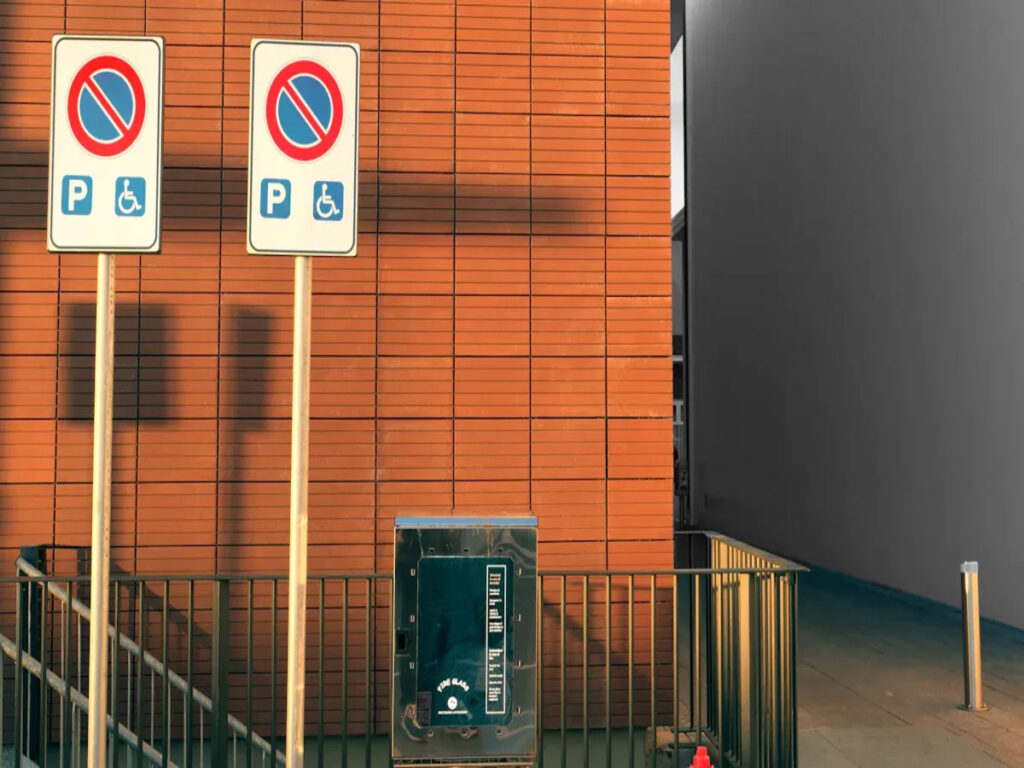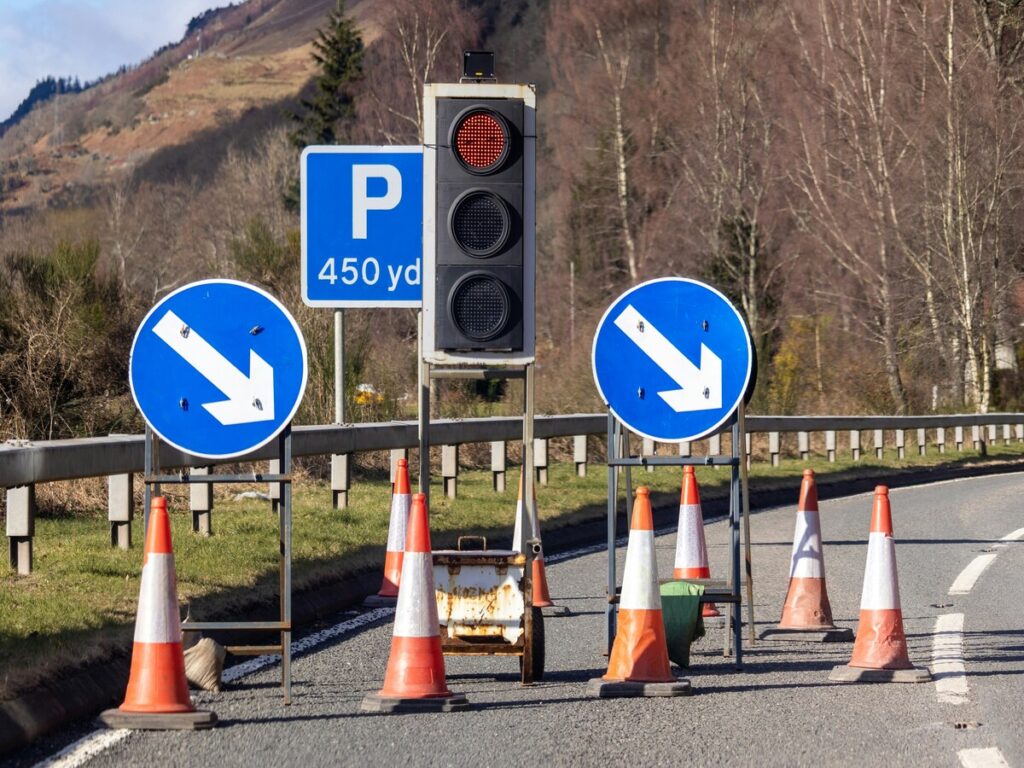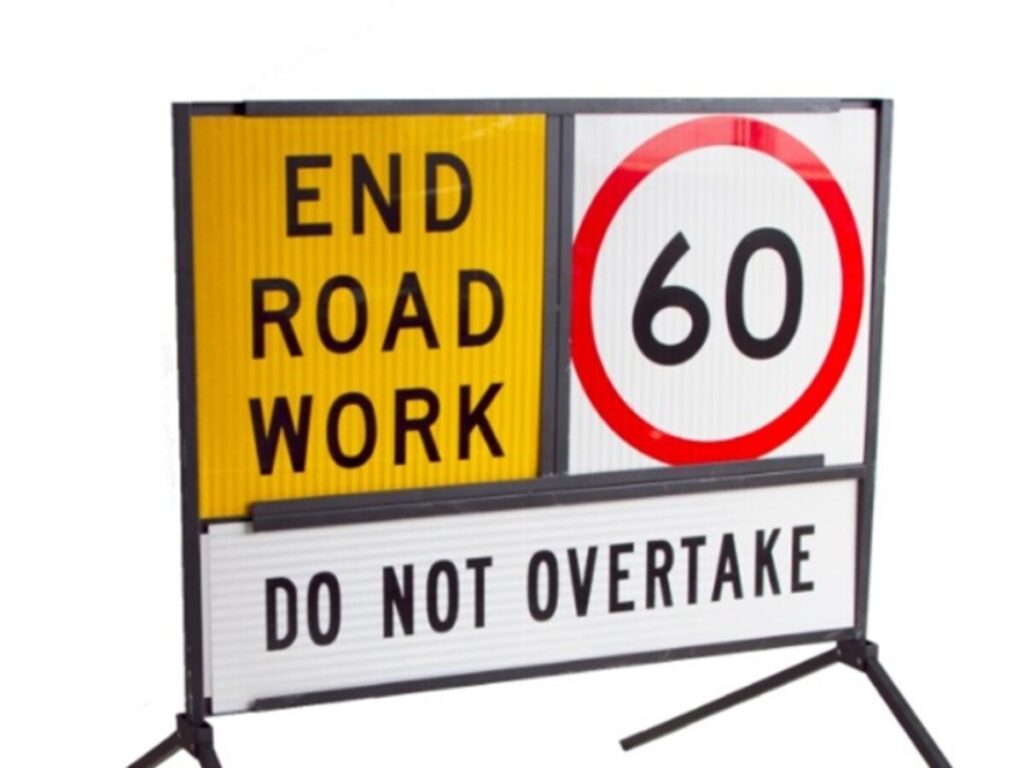
Die Platzierung von Ada Bollard muss strenge Richtlinien von der befolgen Amerikaner mit Behinderungengesetze. Sie müssen den Abstand zwischen Poller beibehalten 3 Zu 5 Füße, verwenden Sie eine Höhe von 36 Zu 48 Zoll, und ermöglichen eine ausreichende Freiheit für die Zugänglichkeit. Diese Regeln schützen die öffentliche Sicherheit und tragen dazu bei, zugängliche Parkplätze und ADA -Parkplätze zu schaffen. ADA Compliance unterstützt die Sicherheit für alle. Sicherer Poller Die Installation stellt auch sicher, dass ADA-konforme Parkschilder sichtbar bleiben. Überprüfen Sie Ihre Website, um die Sicherheit für alle zu verbessern.
Wenn Sie sich nicht sicher sind, welche Verkehrssicherheitsprodukte am besten zu Ihrem Projekt passen, Es ist ratsam, einen vertrauenswürdigen Experten zu konsultieren. OPTRAFFIC bietet professionelle Ratschläge und maßgeschneiderte Lösungen, mit denen Sie die richtigen Produkte mit Zuversicht auswählen können.
Key Takeaways
- Space Poller zwischen 3 Und 5 Füße auseinander, um Rollstühle und Fahrzeuge sicher zu blockieren.
- Setzen Sie die Höhe der Poller zwischen 36 Und 48 Zoll für die Sichtbarkeit und zur Verhinderung von Auslösegefahren.
- Platzieren Sie Poller 1.5 Füße von Bordsteinen und halten Sie jederzeit zugängliche Routen klar.
- Verwenden Sie langlebige Materialien wie Stahl oder Beton und fügen Sie reflektierende oder helle Merkmale für die Sicherheit hinzu.
- Inspizieren und behalten Sie die Poller regelmäßig auf, um sicherzustellen, dass sie sicher bleiben, sichtbar, und ADA -konform.
Ada Bollard Grundlagen
Was ist ADA Compliance?
Sie müssen verstehen ADA Compliance Bevor Sie einen Poller installieren. Das Gesetz über Amerikaner mit Behinderungen legt klare Richtlinien fest, um sicherzustellen, dass öffentliche Räume für alle zugänglich bleiben. ADA Compliance bedeutet, dass Sie diese Regeln befolgen, damit Menschen mit Behinderungen frei und sicher bewegen können.
- ADA verlangt, dass Poller und automatische Hindernisse den Zugang nicht für Rollstuhlfahrer oder Personen, die Mobilitätsunterstützung benötigen.
- Jüngste Vorschriften unterstreichen die Notwendigkeit taktiler Indikatoren und automatischer Absenkung bei einigen Poller.
- Regionale Industriestandards, wie solche der National Fire Protection Association, kann auch Ihre Installationsauswahl beeinflussen.
- ADA -Parkplätze und zugängliche Routen müssen offen und klar bleiben, Sie müssen also Ihre Pollerplatzierung sorgfältig planen.
Sie werden sehen, dass sich ADA Compliance entwickelt hat. Heute, Sie müssen nicht nur Zugänglichkeit, sondern auch Sicherheits- und Smart -Technologie berücksichtigen. Hersteller entwerfen jetzt Pollards, die sowohl ADA- als auch Branchenstandards entsprechen, Reaktion auf neue Vorschriften und die wachsende Nachfrage nach zugänglichen öffentlichen Räumen.
Warum Ada Bollards wichtig ist
Ada Pollards spielen eine Schlüsselrolle für die öffentliche Sicherheit und Zugänglichkeit. Wenn Sie ADA -Richtlinien befolgen, Sie helfen allen - insbesondere denen mit Behinderungen - ohne Hindernisse Räume ohne Hindernisse.
- ADA benötigt zumindest 3 Füße des Abstands zwischen Poller.
- Sie müssen Poller auf einem ebenen Boden installieren, frei von Stolpergefahren, Unfälle verhindern.
- Die Verwendung reflektierender oder kontrastierender Poller erhöht die Sichtbarkeit von Menschen mit Sehbehinderungen.
- Unfälle bewertete Poller, die den Industriestandards erfüllen.
Regelmäßige Inspektionen und Wartung bewahren Ihre Poller -ADA -konform und sicher für alle Benutzer.
Sie finden ADA-konforme Poller in Parks, Ladenfronten, und Transitbereiche. Diese Installationen zeigen, wie die folgenden ADA- und Branchenstandards sicherer sind, besser zugängliche Umgebungen für alle.
ADA -Anforderungen für die Platzierung von Bolletern

Richtiger Pollerabstand
Sie müssen strenge Richtlinien zur Platzierung der Bollard -Platzierung befolgen, um die ADA -Anforderungen zu erfüllen und für alle Benutzer die Zugänglichkeit zu gewährleisten. Das Gesetz über Amerikaner mit Behinderungen setzt klare Standards für den richtigen Pollerabstand fest. Sie müssen mindestens Weltraum -Poller 3 Füße auseinander, um einen sicheren Durchgang für Rollstühle und Mobilitätsgeräte zu ermöglichen. Diese minimale Entfernung sorgt dafür, dass Fußgänger, einschließlich derjenigen, die Hilfsmittel verwenden, kann sich frei durch zugängliche Routen bewegen.
Um den Zugang nicht autorisierter Fahrzeug zu verhindern, Sie sollten nicht mehr als Space Pollards mehr als 5 Füße auseinander. Diese maximale Entfernung blockiert Fahrzeuge, während der Zugang des Fußgängers aufrechterhalten wird. Messen Sie immer vom äußersten Rand jedes Poller, Vor allem, wenn Sie Cover oder Ärmel verwenden. Für eine optimale Platzierung, Positionieren Sie Poller 1.5 Füße vom Bordstein. Auf diese Weise können Autotüren vollständig öffnen und Zugangsgänge für ADA -Parkplätze klar halten.
Weitere detailliertere Anleitungen zu Verkehrssicherheitsvorrichtungen für den Abstand, einschließlich Poller und Größen, Schauen Sie sich unseren Blog an: So bestimmen Sie den richtigen Abstand für Verkehrsgrößen.
Eine schnelle Referenztabelle für den Abstand von Ada Bollard:
| Erfordernis | Messung |
|---|---|
| Mindestabstand | 3 Füße |
| Maximaler Abstand | 5 Füße |
| Entfernung vom Bordstein | 1.5 Füße (ca.) |
Größe und Freigabe
Die Aufrechterhaltung der richtigen Höhe und Abstand für jeden Poller ist für die Zugänglichkeit und Sicherheit von entscheidender Bedeutung. ADA -Richtlinien empfehlen eine Pollerhöhe zwischen 36 Und 48 Zoll. Diese Reichweite stellt sicher, dass Poller für alle Fußgänger sichtbar sind, einschließlich derjenigen mit Sehbehinderungen, und schaffen keine Stolpergefahren.
Sie müssen auch genügend Genehmigungen an jedem Poller bieten. Rollstuhlfahrer benötigen eine klare Öffnung von mindestens 32 Zoll, um sicher durchzugehen. Wenn Sie Poller zu nahe oder zu groß installieren, Sie riskieren, Hindernisse zu schaffen, die den Zugang des Fußgängers blockieren. Die Richtlinien zur Zugänglichkeitsrechts für öffentliche Zeit (Prowag) und andere Branchenstandards verstärken diese Anforderungen. Sie helfen Ihnen dabei, zugängliche Routen zu entwerfen, die allen dienen, einschließlich Menschen mit Behinderungen.
Für optimale Sicherheit und Sichtbarkeit, Die Auswahl der richtigen Höhe für Ihre Verkehrsgrößen ist genauso wichtig wie der Abstand. Um zu lernen warum 4 Füße gilt als ideale Höhe und wie es sowohl Fußgänger- als auch Fahrzeugsicherheit verbessert, Schauen Sie sich unseren detaillierten Leitfaden an: Warum 4 Füße sind die perfekte Höhe für Verkehrsgrößen.
Zugängliche Routen
Sie müssen immer zugängliche Routen offen und frei von Hindernissen halten. Ada Bollard -Platzierung sollte niemals Zugangsgänge blockieren, Wege, oder Eingänge. Wenn Sie Ihre Installation planen, Stellen Sie sicher, dass jede Route für Rollstühle breit genug bleibt, Wanderer, und andere Mobilitätshilfen. Dieser Ansatz unterstützt den Zugang des Fußgängers und erfüllt sowohl ADA- als auch Branchenstandards.
Wenn Sie die ADA -Richtlinien nicht befolgen, Sie riskieren mehr als nur Unannehmlichkeiten. Berichte dokumentieren Fälle, in denen eine unsachgemäße Pollerplatzierung zu rechtswidriger Diskriminierung führte, Sperrte Rollstuhlfahrer Benutzer, und löste kostspielige rechtliche Schritte aus. Sie können diese Probleme vermeiden, indem Sie sicherstellen, dass alle zugänglichen Routen klar und konform bleiben.
Sicherheitserinnerung: Über 36,000 Fahrzeugunfälle treten jedes Jahr bei gewerblichen Immobilien auf, Tausende von Verletzungen verursachen. Die ordnungsgemäße Platzierung von Ada Bollard schützt nicht nur Fußgänger, sondern reduziert auch das Risiko von Unfällen in öffentlichen Räumen.
Durch die Befolgung von ADA -Richtlinien für die Platzierung von Bollard, Sie schaffen sicherer, besser zugängliche Umgebungen für alle. Überprüfen Sie immer Ihre Website, sorgfältig messen, und konsultieren Sie die aktuellen Vorschriften, um die Einhaltung der Einhaltung zu gewährleisten.
Ada Bollard -Installationsschritte
Standortbewertung
Sie müssen jede Poller -Installation mit einer gründlichen Standortbewertung starten. Dieser Schritt hilft Ihnen, kostspielige Fehler zu vermeiden und sorgt von der ADA -Konformität von Anfang an. Befolgen Sie diese Schritte, um Ihre Website zu bewerten:
- Bodenbedingungen bewerten. Überprüfen Sie den Bodentyp und die Stabilität. Identifizieren Sie, ob die Oberfläche konkret ist, Asphalt, oder nackter Boden. Diese Informationen helfen Ihnen, die richtige Grund- und Installationsmethode auszuwählen.
- Überprüfen Sie die unterirdischen Versorgungsunternehmen. Verwenden Sie Versorgungskarten oder lokale Dienstleistungen, um Wasser zu lokalisieren und zu markieren, elektrisch, und Gasleitungen. Dieser Schritt verhindert gefährliche Unfälle während der Installation von Bollard.
- Planen Sie die Pollerplatzierung. Messen und markieren Sie jede Stelle. Stellen Sie sicher.
- Lokale Vorschriften verstehen und Genehmigungen erhalten. Forschungsaufbaus und Verordnungen. Bestimmen Sie die erforderliche Grundtiefe. Sichern Sie alle notwendigen Genehmigungen, bevor Sie beginnen.
- Richten Sie die Richtlinien zur Zugänglichkeit ein. Stellen Sie sicher. Folgen Sie immer ADA- und lokale Barrierefreiheitsstandards.
Tipp: Eine sorgfältige Bewertung der Standort reduziert das Risiko einer Nichteinhaltung und hilft Ihnen, rechtliche Probleme zu vermeiden.
Häufige Fehler während der Standortbewertung können zu Klagen und Zugangsfehlern führen. Die folgende Tabelle zeigt, wie oft diese Probleme auftreten:
| Häufige Zugänglichkeitsfehler | Ausfallrate (%) |
|---|---|
| Niedrig kontrastischer Text | 84 |
| Fehlender alternativer Text für Bilder | 58 |
| Leere Links | 50 |
| Fehlende Formulareingangstasten | 46 |

Messen und Markieren
Genaue Messung und Markierung sind für eine erfolgreiche ADA Bollard -Installation von wesentlicher Bedeutung. Sie müssen die richtigen Werkzeuge verwenden und Best Practices befolgen, um eine ordnungsgemäße Platzierung sicherzustellen.
- Verwenden Sie einen Messgerät für Klebeband oder Laserentfernung, um die genauen Stellen für jeden Poller zu markieren.
- Überprüfen Sie, ob der Abstand zwischen Pollards mindestens beträgt 3 Füße und nicht mehr als 5 Füße. Dieser Abstand unterstützt die Compliance der ADA und hält Wege zugänglich.
- Markieren Sie den Mittelpunkt für jeden Poller mit Kreide oder Sprühfarbe. Stellen Sie sicher, dass die Markierungen sichtbar sind und mit Ihrem Site -Plan ausgerichtet sind.
- Überprüfen Sie den Abstand vom Bordstein. Stellen Sie jeden Poller herum 1.5 Füße vom Bordstein, damit Autotüren sich öffnen und Zugangsgänge klar halten können.
- Bestätigen Sie, dass Ihre Markierungen keine Eingänge blockieren, Ausgänge, oder Notfallrouten.
Notiz: Eine ungenaue Messung oder Markierung kann zu kostspieliger Nacharbeit und Nichteinhaltung führen. Überprüfen Sie immer Ihre Messungen, bevor Sie bohren oder graben.
Installationstipps
Sie können eine reibungslose Poller -Installation erzielen, indem Sie diesen professionellen Tipps verfolgen:
- Verwenden Sie die richtigen Geräte für den Oberflächentyp. Für Beton oder Asphalt, Verwenden Sie einen Kernübungen. Für nackten Boden, Graben Sie bis zur erforderlichen Tiefe und verwenden Sie einen konkreten Fuß.
- Installieren Sie jeden Poller auf eine Höhe zwischen 36 Und 48 Zoll. Dieser Bereich entspricht den ADA -Richtlinien und gewährleistet die Sichtbarkeit für alle Benutzer.
- Richten Sie jeden Poller vertikal und horizontal aus. Verwenden Sie eine Ebene, um die Ausrichtung zu überprüfen, bevor Sie die Basis sichern.
- Sichern Sie die Bollard Foundation mit Beton oder zugelassenen Ankern. Lassen Sie das Fundament vollständig heilen, bevor Sie Stützen entfernen.
- Überprüfen Sie jeden Poller nach der Installation. Überprüfen Sie die Stabilität, Richtige Höhe, und richtiger Abstand.
- Reinigen Sie den Bereich und entfernen Sie alle Trümmer, die Auslösegefahren verursachen könnten.
Tun:
- Befolgen Sie die ADA -Richtlinien für Abstand und Abstand.
- Halten Sie jederzeit zugängliche Routen offen.
- Verwenden Sie mit hoher Sichtbarkeitsmaterialien oder reflektierendes Band für zusätzliche Sicherheit.
Nicht:
- Blocke Access -Gänge, Rampen, oder Eingänge.
- Installieren Sie Poller zu nahe oder zu weit voneinander entfernt.
- Ignorieren Sie lokale Bauvorschriften oder überspringen Sie die Anforderungen der Genehmigung.
Eine gut ausgeführte ADA Bollard-Installation schützt Fußgänger, Unterstützt die Zugänglichkeit, und verringert Ihr Risiko von rechtlichen Schritten. Sorgfältige Planung, präzise Messung, und professionelle Installation helfen Ihnen dabei, die vollständige Einhaltung zu erreichen und sicherere öffentliche Räume zu schaffen.
Häufige Fehler bei ADA Compliance -Fehler
Falscher Abstand
Sie müssen bei der Planung der Pollerplatzierung bei der Planung von Boller. Wenn Sie Poller zu nahe beieinander installieren, Sie blockieren Rollstühle und Kinderwagen daran, durchzugehen. Wenn Sie sie zu weit voneinander entfernt platzieren, Sie erlauben Fahrzeuge, Bereiche für Fußgänger zu betreten. ADA -Richtlinien erfordern ein Minimum von 3 Füße und maximal von 5 Füße zwischen jedem Poller. Messen Sie immer von der Außenkante eines Bolleters zum nächsten. Dieser Ansatz hält Ihre Installation sicher und zugänglich.
Tipp: Überprüfen Sie Ihre Messungen, bevor Sie die Platzierung abschließen. Fehler im Abstand können zu kostspieligen Nacharbeiten und Kompromissen Sicherheit führen.
Behinderte Wege
Sie müssen alle Wege klar halten, um einen einfachen Zugang zu erhalten. Poller sollten niemals Eingänge blockieren, Ausgänge, oder Notfallrouten. Wenn Sie einen Poller mitten in einem Gehweg platzieren, Sie schaffen eine Gefahr für Fußgänger. Menschen, die Mobilitätshilfen verwenden, sehen das Hindernis möglicherweise erst, wenn es zu spät ist. Überprüfen Sie immer Ihren Website -Plan, um sicherzustellen, dass jede Route offen und frei von Barrieren bleibt.
- Legen Sie die Mischung aus dem Hauptstrom des Fußverkehrs.
- Vermeiden Sie die Installation von Poller in der Nähe von Rampen oder Bordsteinschnitten.
- Überprüfen Sie, ob alle Zugangsgänge klar bleiben.
Unzureichende Freigabe
Sie müssen für jeden Poller genügend Freigabe für einen sicheren Durchgang bereitstellen. ADA -Standards erfordern mindestens 32 Zentimeter klarer Breite zwischen Poller. Wenn Sie diese Regel ignorieren, Sie riskieren riskieren, Rollstühle und andere Mobilitätsgeräte zu blockieren. Eine unzureichende Freigabe kann auch Auslösegefahren verursachen und die allgemeine Sicherheit verringern. Überprüfen Sie immer Ihre Messungen und passen Sie die Platzierung nach Bedarf an, um die ordnungsgemäße Freigabe aufrechtzuerhalten.
| Fehler | Auswirkungen auf die Sicherheit |
|---|---|
| Falscher Abstand | Blöcke Zugriff, Ermöglicht Fahrzeuge |
| Behinderte Wege | Gefahren für Fußgänger |
| Unzureichende Freigabe | Stolperrisiken, Blockiert Mobilitätshilfen |
Erinnern: Eine sorgfältige Pollerplatzierung schützt alle und unterstützt die öffentliche Sicherheit.
Material und Sichtbarkeit für Ada Bollards

Materialauswahl
Sie müssen Wählen Sie das richtige Material für jeden Poller Sicherheits- und Einhaltung sicherstellen. Sturzbewertungsstörungen Stahl verwenden, Beton, oder eine Mischung aus beiden. Diese Materialien bieten Ihnen den höchsten Schutz an Crash-bewertetem Schutz. Sie sollten mit Crash-bewertete Poller auswählen, wenn Sie die Fahrzeuge daran hindern möchten, Fußgängerzone zu betreten. Unfallbewertete Poller bieten stark, Das schützt Menschen und Eigentum.
Sie können eine Tabelle verwenden, um gemeinsame Materialien zu vergleichen:
| Material | Crash-bewertet | Haltbarkeit | Wartung |
|---|---|---|---|
| Stahl | Ja | Hoch | Niedrig |
| Beton | Ja | Hoch | Medium |
| Plastik | NEIN | Medium | Niedrig |
| Rostfrei | Ja | Hoch | Niedrig |
Sturzbewertete Pollards funktionieren am besten an Orten mit hohem Verkehr oder wo Sie zusätzliche Sicherheit benötigen. Sie sollten immer prüfen, ob Ihre Website mit Crash-bewertet oder Standard-Poller benötigt wird. Mit Crash-bewertete Optionen können Sie mit ihrem Fahrzeug-Aufprallfestigkeit beruhigt sind.
Tipp: Passen Sie immer das Mischladematerial an die Bedürfnisse Ihrer Website und den erforderlichen Schutz des Crash-bewerteten Schutzes an.
Features mit hoher Sichtbarkeit
Sie müssen jeden Poller leicht für alle sehen lassen. Merkmale mit hoher Sichtbarkeit helfen Menschen mit Sehbehinderungen und Vorbeugung von Unfällen. Crash-bewertete Poller werden oft mit reflektierendem Klebeband geliefert, leuchtende Farben, oder LED -Beleuchtung. Diese Funktionen lassen Crash-bewertete Poller hervorheben, sogar nachts oder bei schlechtem Wetter.
Sie können diese Funktionen zu Ihren Crash-bewerteten Poller hinzufügen:
- Reflektierendes Band oder Farbe
- Leuchtend gelb oder rote Oberflächen
- LED -Leuchten für nächtliche Sichtbarkeit
- Taktile Oberflächen für Menschen mit geringem Sehvermögen
Crash-bewertete Poller mit hohen Sichtbarkeitsfunktionen helfen Fahrern und Fußgängern, Barrieren zu bemerken, bevor es zu spät ist. Sie verbessern die Sicherheit und erfüllen die ADA -Richtlinien, wenn Sie die richtigen Sichtbarkeitsoptionen auswählen.
Erinnern: Poller mit hoher Sichtbarkeit schützen alle und verringern das Risiko von Unfällen.
Sturzbewertung und ADA
Wenn Sie Crash-bewertete Poller verwenden,
Sie sollten mit Crash-bewertete Poller in Betracht ziehen, wenn Sie Menschen und Eigentum vor Fahrzeugauswirkungen schützen möchten. Diese Poller funktionieren am besten in Gebieten mit hohem Fußgängerverkehr, wie Ladenfronten, Schulen, und öffentliche Plätze. Sie benötigen auch Crash-bewertete Poller in der Nähe von Parkplätzen, Eingänge aufbauen, und Essflächen im Freien. Diese Standorte sind einem höheren Risiko für Abstürze bei Fahrzeug-in-Bauwesen ausgesetzt.
Unfälle bewertete Poller liefern starke Barrieren, die verhindern,. Sie werden auf Schlagfestigkeit getestet, einschließlich Auswirkungen mit niedriger Geschwindigkeit unter 30 Meilen pro Stunde. Sie können von fest wählen, abnehmbar, beleuchtet, oder automatische Unfallstoll-Poller. Jeder Typ bietet unterschiedliche Schutzniveaus und Sichtbarkeit.
Hier ist eine Tabelle, die wichtige Trends zu Sicherheits- und Crash-bewerteten Poller zeigt:
| Statistik / Trend | Daten / Beschreibung |
|---|---|
| Tägliche Abstürze für Fahrzeuge und Into-Building | Etwa 100 Abstürze pro Tag in den USA. |
| Jährliche Verletzungen durch Störungen im Ladenfront | Über 16,000 Verletzungen jährlich |
| Jährliche Todesfälle durch Storefront -Abstürze | Bis zu 2,600 Todesfälle jährlich |
| Hauptursache für Abstürze | Bedienerfehler (22%) |
| Andere Ursachen | Pedalfehler, Duis, medizinische Vorfälle |
| Bollardfunktion | Physische Hindernisse verhindern, dass Fahrzeuge Fußgängerzone und Ladenfronten verletzen |
| Bollard -Crash -Bewertung | Auf Schlagfestigkeit getestet, einschließlich Auswirkungen mit niedriger Geschwindigkeit unter 30 Meilen pro Stunde |
| Arten von Poller | Behoben, beleuchtet, abnehmbar, automatisch, Jeder bietet unterschiedliche Schutz- und Sichtbarkeitsniveaus |
| Auswirkung von beleuchteten Poller | Signifikante Verringerung der Fahrzeugunfälle bei Fußgängerbüchern, wenn die Poller vollständig beleuchtet sind |
Unfallbewertete Poller helfen Ihnen, Verletzungen und Todesfälle zu reduzieren, indem Sie Fahrzeuge anhalten, bevor sie Menschen erreichen. Sie erstellen sicherere öffentliche Räume, wenn Sie an den richtigen Orten mit Crash-Bewertungsstörungen verwenden.
Gewährleistung der ADA -Konformität
Sie müssen sicherstellen. Legen Sie jeden mit Crash bewerteten Poller mit genügend Platz für Rollstühle und Mobilitätshilfen, um durchzugehen. ADA -Richtlinien erfordern mindestens 3 Füße zwischen jedem Crash-bewertete Poller, aber nicht mehr als 5 Füße auseinander. Sie müssen auch die Höhe zwischen sich behalten 36 Und 48 Zoll.
Sturzbewertungsstörungen sollten niemals zugängliche Routen blockieren, Rampen, oder Eingänge. Sie müssen überprüfen. Viele Sturzboller sind mit reflektierendem Klebeband oder LED-Beleuchtung ausgestattet. Untersuchungen zeigen, dass Fußgängerschutzgebiete mit voll beleuchteten Unfallstörungen weniger Fahrzeugunfälle haben. Sie verbessern die Sicherheit und erfüllen die ADA -Regeln, wenn Sie diese Funktionen verwenden.
Sie sollten immer gemeinsam Branchenstandards und ADA -Richtlinien befolgen. Dieser Ansatz hilft Ihnen, alle zu schützen, einschließlich Menschen mit Behinderungen. Wenn Sie Crash-bewertete Poller korrekt installieren, Sie erstellen öffentliche Räume, die sowohl sicher als auch zugänglich sind.
Um mehr darüber zu erfahren, wie unterschiedliche Verkehrssicherheitsprodukte mögen Verkehrskegel Tragen Sie auch zur Einhaltung von ADA und sichereren Straßen bei, Schauen Sie sich unseren Blog an: Verkehrskegel und ADA Compliance: Straßen für alle sicherer machen.
ADA -Compliance -Inspektionen und Wartung
Inspektionscheckliste
Sie müssen Ihre Poller -Installation regelmäßig inspizieren, um die ADA -Compliance aufrechtzuerhalten. Eine gute Inspektion hilft Ihnen, Probleme zu finden, bevor sie zu Sicherheitsrisiken werden. Verwenden Sie diese Checkliste, um Ihre Bewertung zu leiten:
- Überprüfen Sie den Abstand zwischen jedem Poller. Stellen Sie sicher, dass es zumindest vorhanden ist 3 Füße und nicht mehr als 5 Füße zwischen ihnen.
- Messen Sie die Höhe jedes Poller. Bestätigen Sie, dass jeder dazwischen steht 36 Und 48 Zoll groß.
- Suchen Sie nach klaren Wegen. Stellen Sie sicher, dass Rollstühle und Mobilitätshilfen ohne Hindernisse durchlaufen werden können.
- Überprüfen Sie auf Schäden oder lose Teile. Ersetzen oder reparieren Sie sofort gebrochene Poller.
- Überprüfen Sie die Sichtbarkeitsfunktionen. Bestätigen Sie, dass reflektierendes Band oder Farbe immer noch hell und leicht zu sehen ist.
Tipp: Halten Sie eine Aufzeichnung jeder Inspektion bei. Auf diese Weise können Sie die Wartung verfolgen und bei Bedarf die Einhaltung nachweisen.
| Inspektionselement | Was zu überprüfen | Pass/Fail |
|---|---|---|
| Abstand | 3-5 Füße zwischen Poller | |
| Höhe | 36-48 Zoll | |
| Pfadfreiheit | Keine Hindernisse | |
| Zustand | Kein Schaden oder lose Teile | |
| Sichtweite | Reflektierende Merkmale intakt |
Laufende Wartung
Sie müssen Ihre Poller in gutem Zustand halten, um die Zugänglichkeit und Sicherheit zu unterstützen. Regelmäßige Wartung schützt Ihre Investition und hält Ihre Website in Einhaltung. Reinigen Sie jeden Poller häufig, um Schmutz und Trümmer zu entfernen. Reflektierende Klebeband erneut anwenden, wenn es zu verblassen beginnt. Ziehen Sie die Schrauben fest und überprüfen Sie die Fundamente, um das Wackeln zu verhindern.
Wenn Sie Schaden bemerken, Planen Sie sofort Reparaturen. Ersetzen Sie jeden Poller, der nicht festgelegt werden kann. Sie sollten auch Ihre Inspektions -Checkliste nach jeder Reparatur oder jedem Upgrade aktualisieren. Diese Routine hilft Ihnen, kostspielige Probleme zu vermeiden und Ihre Website für alle zu schützen.
Erinnern: Konsequente Wartung stellt sicher. 🛠️
Schnelle Referenz -Checkliste
Sie können diese Schnellreferenz -Checkliste verwenden, um sicherzustellen. Diese Anleitung hilft Ihnen, jeden Schritt zu überprüfen und häufige Fehler zu vermeiden. Befolgen Sie diese Punkte, um Ihre öffentlichen Räume sicher und für alle zugänglich zu machen.
Ada Bollard -Platzierung
- Space Poller 3 Zu 5 Füße auseinander, um Rollstühle und Mobilitätshilfen zu ermöglichen.
- Setzen Sie die Höhe der Poller zwischen 36 Und 48 Zoll für Sichtbarkeit und Sicherheit.
- Mindestens 32 Zentimeter klarer Breite zwischen Pollards für einen einfachen Zugang.
- Platzieren Sie Poller 1.5 Füße von Bordsteinen, damit Autotüren vollständig öffnen können.
- Blockieren Sie niemals zugängliche Routen, Rampen, oder Eingänge.
Installation und Wartung
- Überprüfen Sie die Bodenbedingungen und markieren Sie den Standorte, bevor Sie die Boller -Installation beginnen.
- Verwenden Sie Funktionen mit hoher Sichtbarkeit wie reflektierendes Band oder helle Farben.
- Überprüfen Sie die Poller regelmäßig auf Schäden, Lose Teile, oder verblasste Markierungen.
- Reinigen und pflegen.
Tipp: Überprüfen Sie Ihre Messungen und Ihre Ausrichtung immer, bevor Sie jeden Poller sichern.
ADA Compliance -Strategien
Die folgende Tabelle zeigt wichtige Strategien für die Einhaltung von ADA auf verschiedenen Ebenen:
| Compliance -Ebene | Schlüsselstrategien und Anforderungen |
|---|---|
| Stufe a | – Verwenden Sie die tastaturfreundliche Navigation – Etiketten Sie Links und Schaltflächen – Geben Sie den ALT -Text für Bilder an – Vermeiden Sie leere Links oder Überschriften – Bieten Sie Bildunterschriften für Videos an – Autoplay -Audio verhindern – Halten Sie das Design einfach und fehlerfrei |
| Level AA | – Stellen Sie Bildunterschriften für alle Medien an – Behalten Sie den Farbkontrast von mindestens 4.5:1 – Unterstreichen Textlinks – Ermöglichen 200% – Entfernen Sie redundante Links – Bieten Sie mehrere Navigationsmethoden an – Vermeiden Sie es, nur Farbe zu verwenden, um Informationen zu vermitteln |
Halten Sie diese Checkliste bei jedem Projekt griffbereit. Sie werden sicherer erstellen, Mehr zugängliche Umgebungen, wenn Sie diese Schritte ausführen.
Sie können Ada Bollard Compliance erreichen, indem Sie wichtige Schritte folgen: Space Pollards zumindest 3 Füße auseinander, Höhen zwischen 36 Und 48 Zoll, Verwenden Sie Level Boden, und reflektierende Funktionen hinzufügen. Regelmäßige Inspektionen halten Ihre Website zugänglich. Reale Projekte wie Safe Streets zeigen, dass zugängliche öffentliche Räume zu sichereren Gemeinden führen. Wenn Sie die Barrierefreiheit priorisieren, Sie helfen allen, sich willkommen und sicher zu fühlen. Überprüfen Sie Ihre Website oder konsultieren Sie einen Experten, um die vollständige Einhaltung der Einhaltung sicherzustellen. Machen Sie die Zugänglichkeit zu Ihrer Priorität - Ihre Community wird davon profitieren.
FAQ
Was ist der Abstandsbedarf von Ada Bollard??
Das Gesetz über Amerikaner mit Behinderungen (Ada) erfordert einen minimalen klaren Raum von 36 Zoll (3 Füße / 915 mm) zwischen Poller, um sicher zu sein, ungehinderter Durchgang für Rollstühle und Mobilitätshilfen. Dieser Abstand sollte von der Außenkante eines Pollers bis zur Außenkante des nächsten gemessen werden.
Bonuspipp:
Einige lokale Codes benötigen möglicherweise mehr als 36 Zoll (3 Füße), Es ist also immer klug, die regionalen Vorschriften vor der Installation zu überprüfen.
Wie stelle ich sicher, dass Poller die ADA-konformen Parkschilder nicht blockieren?
Sie müssen die Platzierung jedes Pollers vor der Installation überprüfen. Halten Sie die Poller von Schildern fern und stellen Sie sicher, dass ADA-konforme Parkschilder aus allen Richtungen aus sichtbar bleiben. Dieser Schritt hilft Fahrern und Fußgängern, leicht zugängliche Parkplätze zu finden.
Wie oft sollte ich Ada Bollards auf Compliance inspizieren?
Sie sollten die Poller mindestens zweimal im Jahr inspizieren. Suchen Sie nach Schäden, Abstandsprobleme, und Sichtbarkeitsprobleme. Regelmäßige Schecks helfen Ihnen bei der Aufrechterhaltung der Compliance und halten Sie zugänglichen Parkplätzen für alle sicher.
Benötigt OSHA Poller??
OSHA mandatiert nicht speziell die Verwendung von Poller, Es erfordert jedoch, dass Arbeitgeber die Mitarbeiter vor Gefahren am Arbeitsplatz schützen müssen, einschließlich derjenigen, die durch bewegliche Fahrzeuge verursacht werden. Viele Einrichtungen installieren Poller als empfohlene Sicherheitsmaßnahme, um Fußgängerbereiche zu schützen, Eingänge aufbauen, Docks laden, und Ausrüstungszonen. Obwohl nicht ausdrücklich erforderlich, ordnungsgemäß platzierte Poller helfen bei der allgemeinen Dienstklausel von OSHA für die Bereitstellung eines sicheren Arbeitsumfelds. Für detailliertere OSHA -Vorschriften, Bitte besuchen Sie die OSHA Bundesregister offizielle Seite.



















